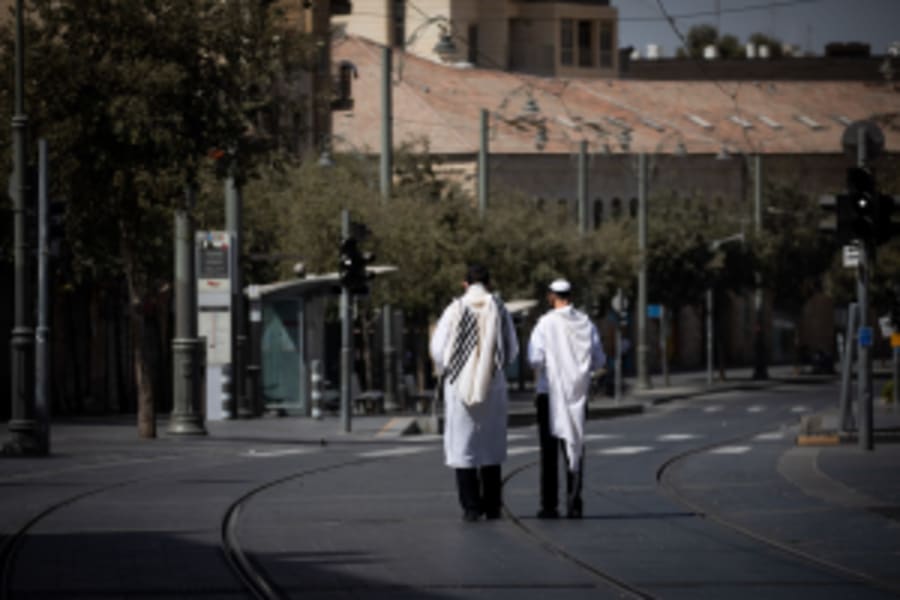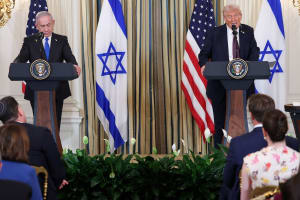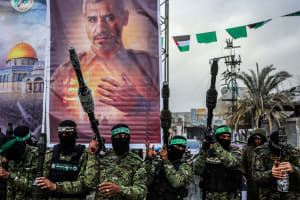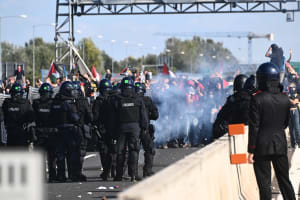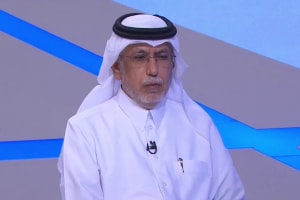IDF reservist denies shooting starving Gazans, says coordinated rush on military position led to shots fired
‘Hamas wanted a bloodbath, something to sell to the media, And they got it,’ soldier alleges
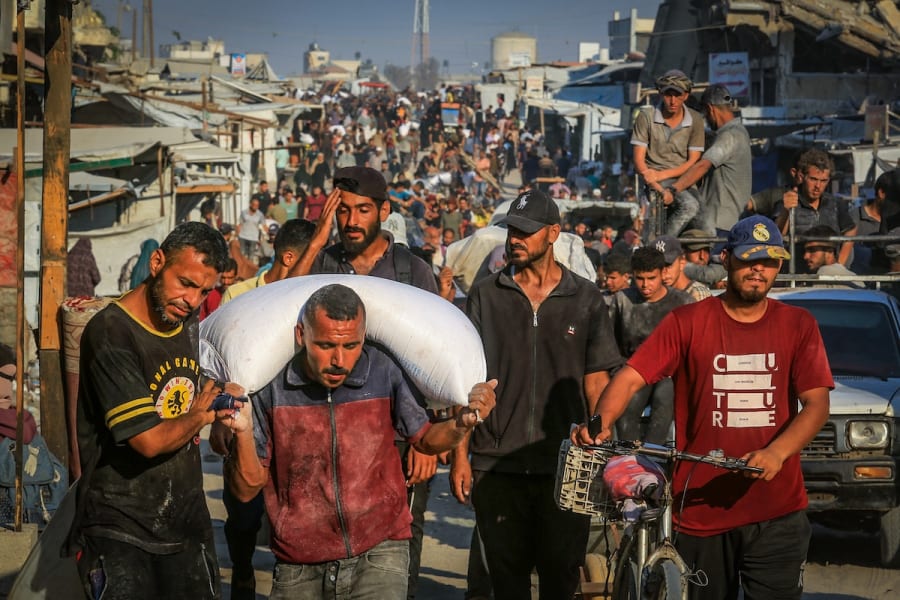
Following a rush of media narratives over the past few weeks alleging that IDF soldiers deliberately opened fire on Palestinians in Gaza seeking humanitarian aid, an IDF reserve soldier recently spoke with The Media Line about one such incident, explaining that the coverage misrepresented what actually took place.
The story, involving the killing of around 85 Palestinians approaching an aid distribution site near the Zikim Crossing, drew international outrage after the UN’s World Food Programme alleged that IDF soldiers opened fire indiscriminately on crowds of Gaza civilians who were “anxiously waiting to access desperately needed food supplies.”
The Israeli soldier, referred to only by the initial ‘Y’ to protect his identity, said the crowds were not innocently waiting for aid.
Y explained that the incident began late during the previous night, when the first distribution trucks arrived at the site where the IDF soldiers were waiting and securing the location. The aid was meant to be distributed the next morning, but Y said that a crowd had already begun to gather that night.
“They weren’t supposed to be there. It was closed. They saw the trucks and came to loot,” he said. “We fired warning shots. No one was hurt. They left, for the time being.”
However, that was not the end of the incident. Y said that the IDF had posted the opening of the aid distribution site on several Palestinian Facebook groups, announcing, “The site will open at 9 a.m. Do not approach.”
According to his recollection, at around 2 a.m. a small scout group was sent about 1 kilometer away from the distribution site to warn off any groups attempting to approach the site before the correct time.
About 4:30 a.m., a group of four Palestinian men approached the team at the forward position, while other voices could be heard in the dark behind them.
Suddenly, the soldiers heard chants of “Allah Akbar,” at which point they realized the group of Palestinian men was not there to wait for the aid site to open, according to Y.
“That’s when it became obvious; this wasn’t just a spontaneous crowd,” Y related. “It was coordinated.”
The four men appeared from behind a nearby building, and the IDF team fired warning shots. But instead of running away, the men, rapidly joined by hundreds more, started running at the soldiers.
“Then four became a hundred. Then a thousand. All adult men. No women. No children. Just men running straight at us,” Y recounted.
He said the crowd started to spread out, surrounding the soldiers on three sides, and then the soldiers heard gunfire from behind the crowd.
“We heard Kalashnikov fire from behind the crowd. We didn’t see who fired it, but we heard it clearly,” he said.
When the crowds got within 100 meters (110 yards) of the aid trucks, the soldiers received an order to defend the position. It was at that point that the troops fired on the men approaching their position.
“Nothing stopped them, not the drones, not the megaphones, not flash grenades or warning shots,” Y shared. “In the end, we fired. There was no other choice.”
He blamed Hamas for the incident, saying the terror group intended to use the event to provoke outrage against Israel.
“Hamas had two goals,” he claimed. “Steal the food and provoke a tragedy they could film.”
Y believes the same group had tried to storm the site at 10 p.m. and again at 2 a.m. “They came back stronger. More people. More vehicles. Gunfire behind them. They knew what they were doing.”
He also said the IDF has clear protocols that prevent troops from firing on crowds unless clearly threatened.
We weren’t allowed to engage unless it was life-threatening,” Y explained. “That’s how Hamas exploited it. They knew we had limits. They sent the crowd ahead like a shield. And when things exploded, the cameras were already rolling.”
“We had to choose between protecting the mission and being slaughtered on a rooftop. And then we get called war criminals.”
He believes Hamas orchestrated the incident to generate media coverage and reinforce allegations of IDF war crimes.
“By midday, headlines were saying we shot starving civilians,” he noted. “That’s not what happened. It wasn’t a line for food. It was a violent attempt to overrun the corridor.”
“They wanted a bloodbath. Something to sell to the media. And they got it.”
Palestinian Telegram channels later published a list of the names of those killed in the incident, which Y said supports the IDF’s version of the events.
“All adult males. No women. No children,” he noted.
He noted the discrepancy between international coverage of events in Gaza, and coverage of other war zones.
“Saudi Arabia bombed the Houthis for 10 years and sent [only] 5,000 trucks of aid, but there was no global outrage,” Y noted. “Israel has been bombing Hamas, a terrorist organization, for 21 months and has sent more than 23,000 aid trucks into Gaza but is somehow accused of starving Gaza.”
Shortly after the incident, the Israeli government announced changes to its humanitarian aid strategy, including air drops into Hamas-free areas and operational pauses to allow UN trucks to transport aid from border crossings to warehouses inside Gaza.
According to UN data, most aid trucks entering Gaza have been intercepted by looters or “armed actors.”
The aid trucks entering Gaza using the UN’s method.
— Israel News Pulse (@israelnewspulse) July 26, 2025
This is how Gazans get killed.
And afterward, the UN dares to claim that the aid distribution method at the American GHF aid distribution centers is what endangers Gazans, even calling them (together with journalist Muhammad… pic.twitter.com/iwk97quXHy
The data shows that the World Food Programme has experienced the highest number of aid interceptions among UN agencies.

The All Israel News Staff is a team of journalists in Israel.
You might also like to read this:





